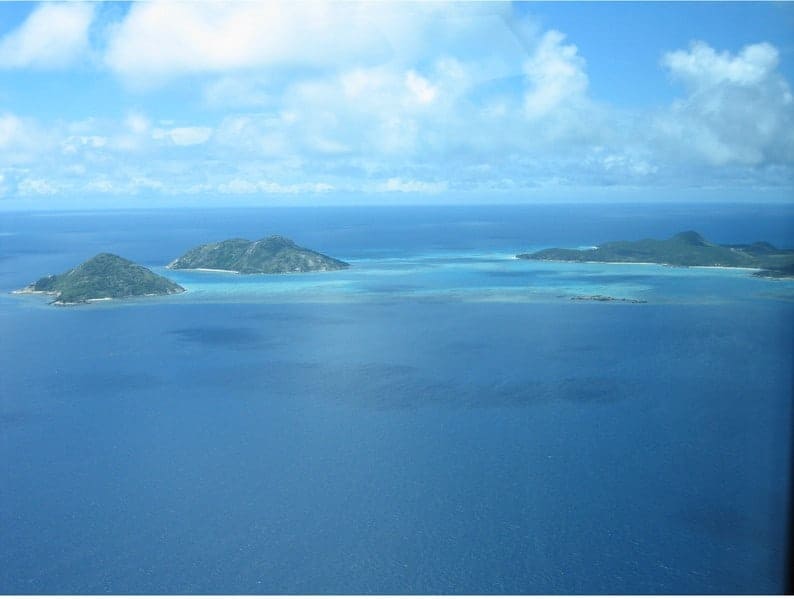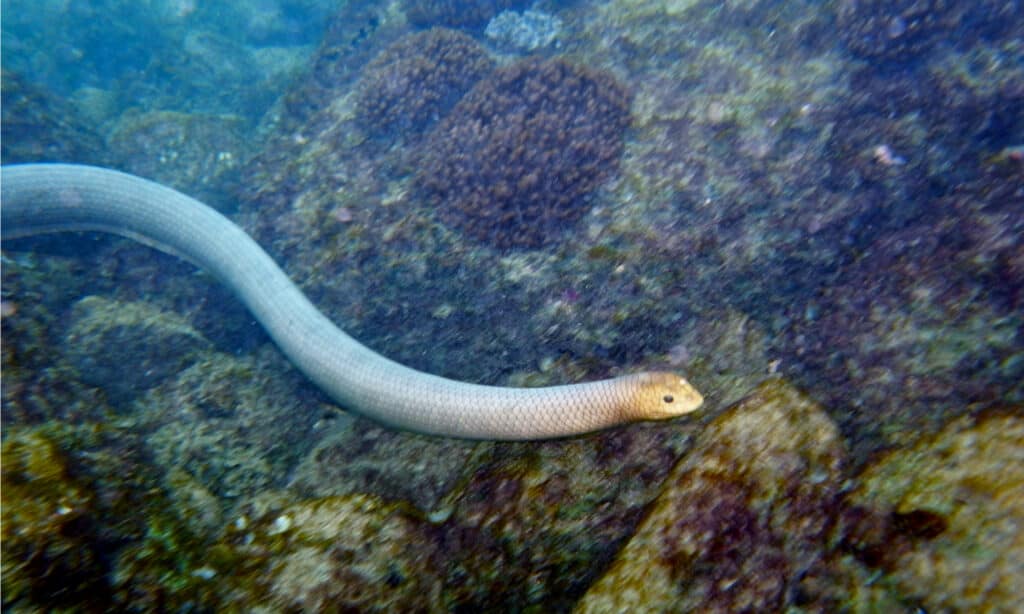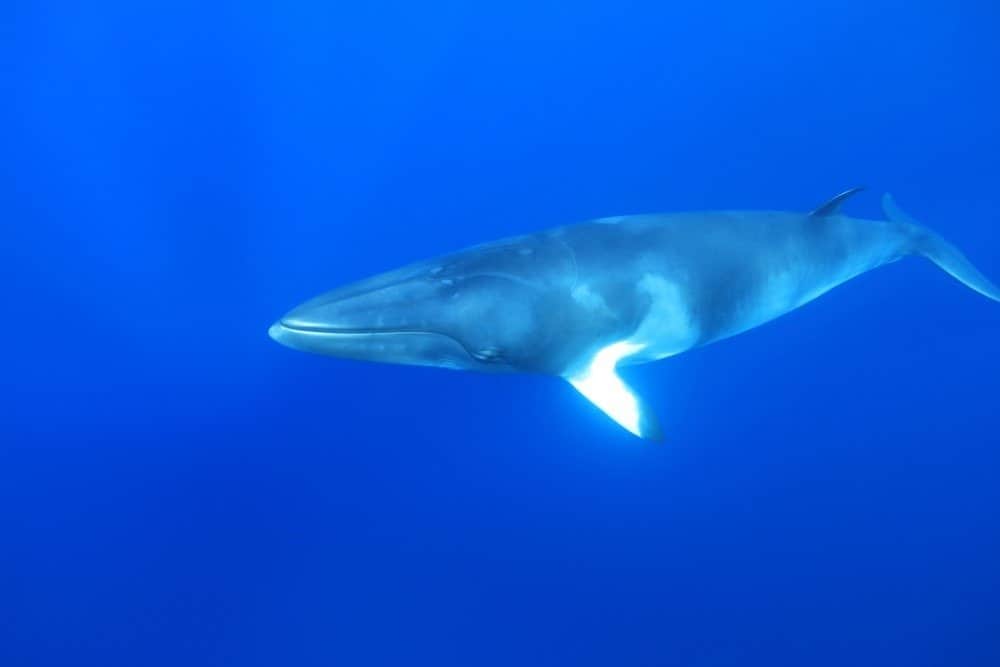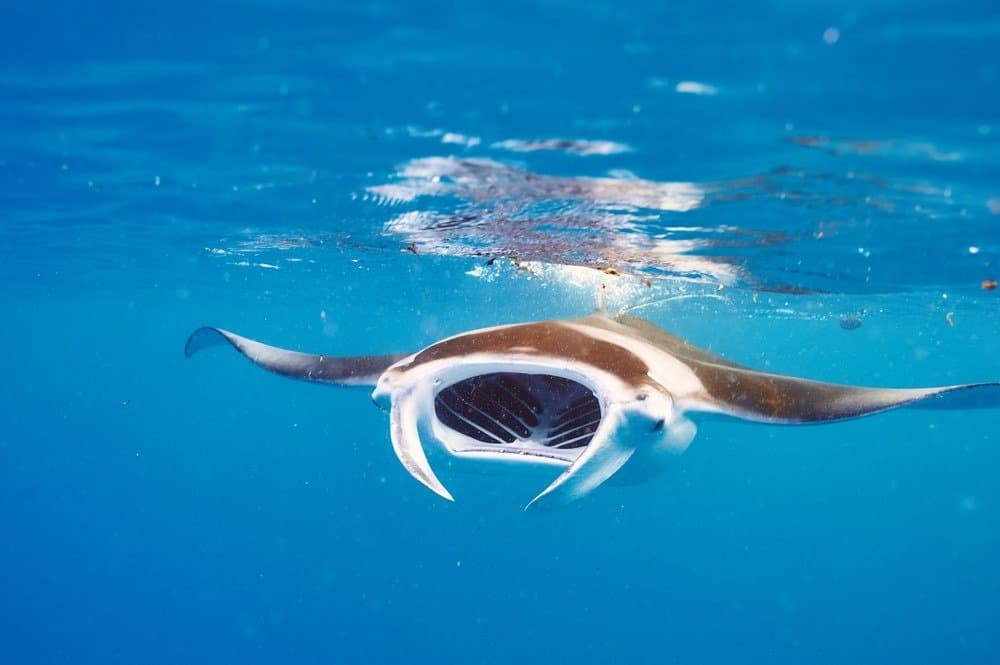When people think about seeing the world, they generally think about all of the amazing phenomena on land, such as forests, mountains, and deserts. However, there are vast worlds to see underwater as well. These include coral reefs. It’s actually truly fascinating to think about how coral reefs work and how they can grow to be absolutely massive. Read on to learn more about coral reefs, including the largest coral reef in the world!
What’s the Largest Coral Reef in the World?

The largest coral reef in the world is the Great Barrier Reef, located off the coast of Queensland, Australia.
©Photo courtesy of Sean Connolly. / CC BY 2.5 – License
The largest coral reef in the world is the Great Barrier Reef, located in the Coral Sea, off the coast of Queensland, Australia. It stretches for about 1,429 miles and has an impressive surface area of about 133,000 square miles. It’s large enough that it’s actually visible from space!
The structure is composed of over 3,000 individual coral reefs, with more than 400 types of coral. Not only is it the largest coral reef, but the largest living structure on Earth. The Great Barrier Reef is home to many plants and animals and it is an extremely important part of the ecosystem in that region.
However, despite its impressive size, this reef is not invulnerable. Climate change is a very real threat facing the Great Barrier Reef. Since 1995, it’s actually lost half of its coral. This is because the polyps that form the coral reefs can die if water becomes too warm as they are extremely sensitive to sea temperatures.
Human activities, such as coastal development and the creation of agricultural pollutants, also threaten the reef. Fortunately, rescue efforts are being made to preserve and save the Great Barrier Reef.
What Is a Coral Reef?

The Great Barrier Reef, composed of more than 3,000 reef systems and containing 133,000 square miles of area, is the largest living structure on the planet.
©Sahara Frost/Shutterstock.com
Now that we know that the Great Barrier Reef is the largest coral reef in the world, you might wonder, exactly what is a coral reef? These large underwater structures are made up of skeletons of marine invertebrates, known as coral.
There are two types of corals – hard corals and soft corals. Hard corals are the ones that build coral reefs. They draw calcium carbonate from seawater in order to help create their hard exoskeletons. Soft corals are flexible and do not have these exoskeletons.
Each individual coral is referred to as a polyp. These polyps add their own exoskeletons to existing coral structures, living on the exoskeletons of their ancestors. Coral reefs grow with the addition of every polyp, until they become very significant and large parts of the aquatic environment. Corals are found in oceans all over the world.
Animals That Live Around the Largest Coral Reef in the World

The Great Barrier Reef is home to a vast variety of plants and animals, including many species of whale.
©aquapix/Shutterstock.com
There are many, many animals that live in and around the Great Barrier Reef. It’s a remarkably diverse ecosystem. However, here are some of the most notable animals of this incredible coral reef, known as the “Great 8“.
Giant Clam
Giant clams can weigh up to 441 pounds and live on the reef for the duration of their lives. They lay on the ocean floor, living within the coral. They are filter feeders, using a large central opening to consume plankton.
The algae within the clam also produces metabolic waste products. The clams are said to have a symbiotic and mutualistic relationship with the algae.
Clownfish
There are multiple species of clownfish, and they can come in many different colors. Most have white patterning, however. They are relatively small fish, ranging from 2.75 to 6.7 inches long. They are typically found in warm waters or sheltered coral reefs, living in anemones.
Clownfish feed on algae, small invertebrates, and food scraps left behind by the anemone. Their relationship with the anemone is symbiotic and mutually assistive. The clownfish uses its bright coloring to lure fish into the anemone, while the anemone protects the clownfish from predators and gives it food.
Manta Ray

Huge, gentle manta rays regularly inhabit the Great Barrier Reef.
©haveseen/Shutterstock.com
Manta rays are large fish with long pectoral fins that live in various regions of the Great Barrier Reef. They feed on zooplankton and krill, frequently forming long chains in order to create a spiral effect that effectively catches food. They are also known to travel large distances to look for food.
Manta rays have shown high intelligence and strong long-term memory. They have the largest brain-to-body ratio of any currently living fish.
Turtles
The Great Barrier Reef has many northern green turtles, 90% of which come from Raine Island. Unfortunately, these turtles are currently endangered, although efforts are being made to restore their nesting area on Raine Island.
Even though turtles are some of the oldest organisms on the planet, actually having shared it with dinosaurs at one point, only about one in every thousand hatchlings will survive to adulthood.
Maori Wrasse
This fish is the largest member of the Labridae family. The females can grow to be about three feet long, with the males reaching six feet. This fish is known to be friendly, yet passive. It also has a distinctive appearance that includes fleshy, thick lips and a prominent lump appearing above its eyes.
Groupers
Groupers have notably big mouths and are some of the largest of the bony fish. The potato cod, a native fish of Australia, is part of the grouper family. The Queensland grouper is a relative of the potato cod and is actually the largest bony fish that has been found on the Great Barrier Reef. The Queensland grouper can weigh up to 882 pounds and grow to be more than 6.5 feet long.
Whale Sharks

The largest animals to inhabit the Great Barrier Reef are the massive whale sharks.
©Tee Wong/Shutterstock.com
Whale sharks are the largest living fish in the world, able to grow up to 61 feet long. These sharks are filter feeders, which swallow prey simply by swimming forward. Curiously, although they have hundreds of tiny teeth, they don’t use them while eating. Instead they use “filter pads” to catch their prey in their mouth as the water is forced back out of their gills.
However, these animals are carnivorous, eating fish larvae, crab, krill, jellyfish, and small schooling fish. You don’t have to worry, as they don’t go after humans. They often congregate for feeding purposes around the coral reef.
Whales
Between the months of June and November, there are up to 10,000 whales that migrate from the frigid waters of Antarctica to the warmth of the Great Barrier Reef. Here, they breed and give birth to their young. There are many species of whales that do this, but you’re most likely to see dwarf minke whales and humpback whales at this reef.
Up Next
- What’s The Largest Bay In The World?
- 10 Incredible Animals That Live In Coral Reefs
- Discover The Largest Ocean In The World
The photo featured at the top of this post is © iStock.com/chameleonseye
Thank you for reading! Have some feedback for us? Contact the AZ Animals editorial team.






